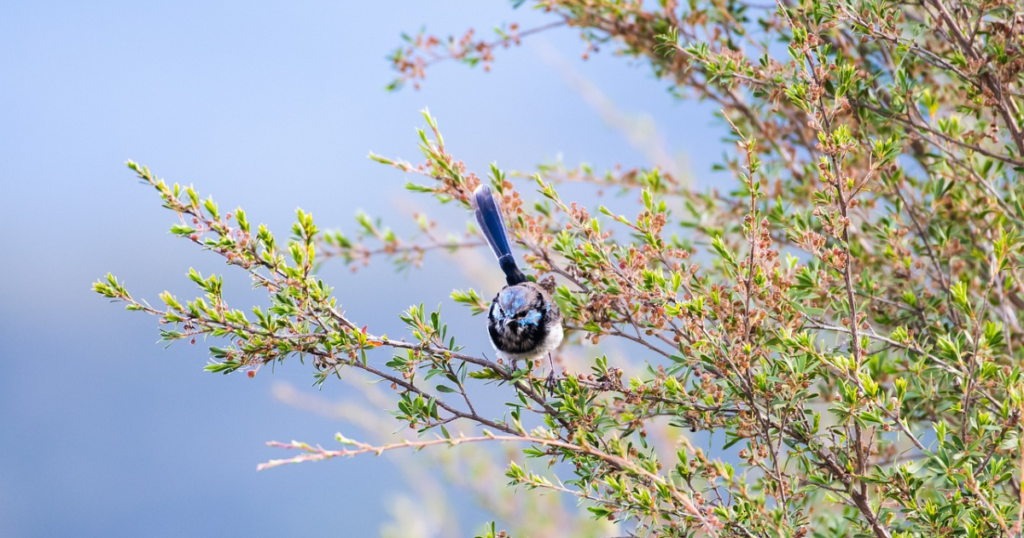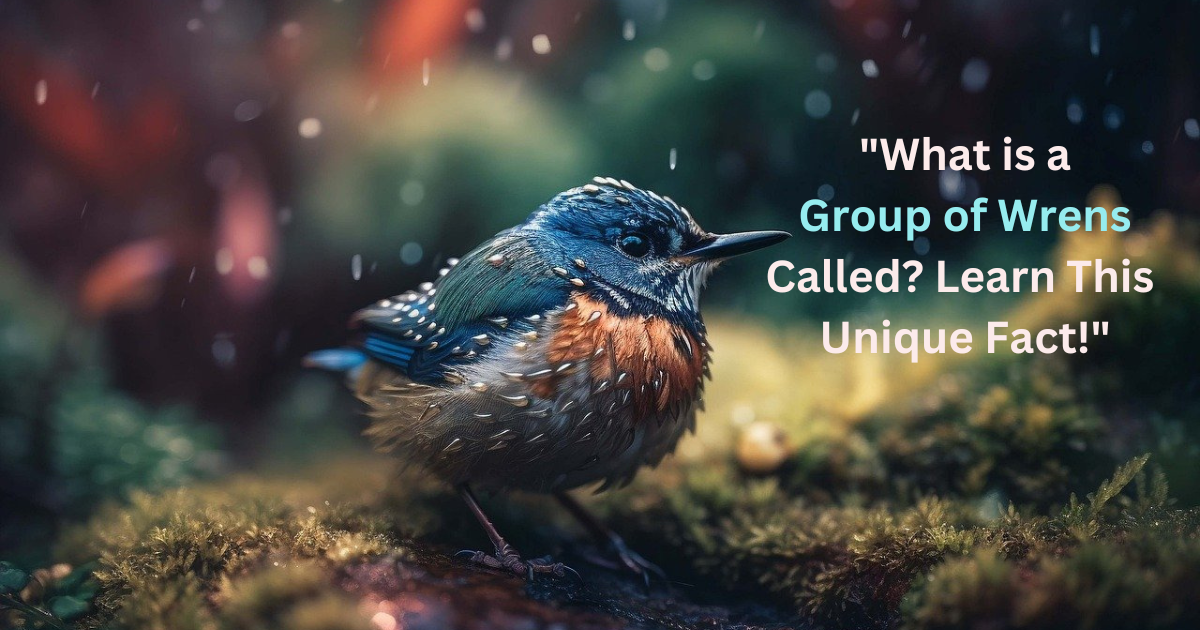Have you ever wondered what a group of wrens is called? The answer is as delightful as these tiny songbirds themselves—a “bouquet.” Isn’t that charming? Much like a collection of fresh flowers wrens bring beauty, energy and vibrancy to their surroundings. But why are they associated with such a poetic term? This article dives into the world of wrens exploring their behavior group dynamics and the fascinating reason behind their collective noun.
Introduction to Wrens
What Are Wrens?
Wrens are small birds packed with personality. They belong to the family Troglodytidae which includes nearly 80 species distributed across the Americas, Europe and parts of Asia. Their small size brownish plumage and loud melodious calls make them easy to identify. Despite their modest appearance wrens are known for their adaptability thriving in various habitats from forests to suburban gardens.
Species of Wrens Around the World
Wrens can be found in nearly every corner of the world and each species has its unique traits. Let’s take a closer look at some of the most well-known species:
- Common Wren (Troglodytes troglodytes): Found across Europe and Asia this tiny bird is famous for its loud and cheerful song.
- Carolina Wren: A frequent visitor to backyards in the southeastern United States this species is known for its warm reddish-brown plumage and a powerful voice.
- Bewick’s Wren: Native to North America this bird is recognized by its distinctive white eyebrow stripe and long tail.
What is a Group of Wrens Called?
The Wren Collective Noun
A group of wrens is called a “bouquet.” Yes, much like a collection of flowers wrens are seen as symbols of beauty and joy. The term captures their delicate yet vibrant presence whether they’re flitting around a garden or chirping in harmony.
Why Are Wrens Called a “Bouquet”?
The term “bouquet” likely comes from the wrens’ collective charm and their tendency to gather in tight-knit groups especially during colder months. Their vibrant energy and coordinated movements evoke the image of a perfectly arranged bouquet where every flower contributes to the overall beauty.

Wren Behavior in Groups
How Wrens Group Together
While wrens are often solitary or seen in pairs they sometimes form groups particularly in challenging conditions like winter. Here’s how they come together:
- For Warmth: In colder months wrens roost together to conserve heat.
- For Safety: Groups allow wrens to keep an eye out for predators.
- For Resources: Sharing information about food sources benefits the entire group.
Social Structure of Wrens
Wrens are known for their territorial behavior fiercely defending their nests and feeding areas. However in group settings they exhibit surprising cooperation sharing food sources and roosting spots.
Seasonal Variations in Grouping
Wrens are more social in winter gathering for survival. In warmer months they prioritize nesting and raising their young making them less likely to form groups.
Why Do Wrens Form Groups?
Grouping helps wrens survive in the wild by:
- Reducing Predation Risks: Predators are less likely to attack larger groups.
- Improving Foraging Efficiency: Multiple birds searching together increases the chance of finding food.
- Building Community Bonds: Even among territorial species temporary cooperation can strengthen survival.
Bird Collective Nouns and Their Origins
Other Bird Group Names You Should Know
Birds have some of the most fascinating collective nouns each reflecting their behavior or appearance. Here are a few examples:
- A murder of crows – Perhaps due to their mysterious and ominous behavior.
- A parliament of owls – Reflecting their wise and regal demeanor.
- A flamboyance of flamingos – A nod to their vibrant colors and elegant movements.
- A gaggle of geese – Perfectly capturing their noisy and chaotic nature.
How Collective Nouns Reflect Bird Behavior
The creativity behind these terms isn’t random—it often highlights unique traits of the birds. For wrens “bouquet” emphasizes their lively and harmonious nature making it one of the most endearing collective nouns in the bird kingdom.
Wrens in the Wild
Where to Find Wrens
Wrens are incredibly adaptable thriving in various habitats. You can find them:
- In Dense Shrubs: Wrens prefer areas with plenty of cover such as hedges and bushes.
- In Forest Edges: These transitional zones offer ample food and nesting sites.
- In Urban Gardens: Wrens frequently visit gardens with bird-friendly plants and feeders.
How to Identify a Wren Group
Identifying a “bouquet” of wrens requires patience and keen observation. Here’s what to look for:
- Listen for Their Songs: Wrens are loud singers with a distinct melodious call.
- Watch Their Movements: They’re quick and darting often hopping between branches.
- Look for Clusters: During winter you might spot several wrens roosting together in trees or shrubs.

Fun and Fascinating Bird Facts
Lesser-Known Wren Facts
Wrens have some unique behaviors that set them apart:
- Dummy Nests: Male wrens often build multiple nests allowing the female to choose the best one.
- Loud Voices: Despite their small size wrens have powerful voices that can be heard from a distance.
- Clever Nesting: Wrens are known for nesting in unusual places from mailboxes to old boots!
Tips for Bird Watching
If you’re hoping to spot wrens in their natural habitat, then, to begin with, here are some helpful tips:
- Go Early: Wrens are most active during dawn.
- Be Quiet: Wrens are shy birds and can be startled by loud noises.
- Use Binoculars: Their small size and quick movements make them tricky to observe without magnification.
Conclusion
Wrens are small but mighty birds that captivate us with their charm, energy and adaptability. Their collective noun “bouquet” beautifully encapsulates their harmonious nature and vibrant presence. Whether you’re a birdwatcher, a nature lover or just someone who enjoys learning new things, understanding the world of wrens adds a touch of wonder to your day.
So, next time you hear the cheerful chirps of wrens or spot them flitting through your garden remember—you’re witnessing nature’s very own bouquet in action.
FAQs
What is a group of wrens called?
A group of wrens is called a “bouquet.”
Why is the wren collective noun a bouquet?
The term reflects their beauty, harmony and lively behavior much like a bouquet of flowers.
Do wrens always form groups?
No, wrens are mostly solitary or in pairs; however, they occasionally group together, especially during migration or in the winter months.
Where can I spot wrens in the wild?
Wrens can be found in dense shrubs, forest edges and urban gardens. Look for them in areas with plenty of cover.
What makes wrens unique among birds?
Wrens are well known for their loud songs, territorial behavior, and, most notably, their creative nesting habits, such as building dummy nests.
